
Welcome, car fanatics and curious minds, to a journey down memory lane, where the vehicles were less about touchscreens and more about… well, let’s just say a whole different kind of experience! If you’re a kid today, or even a young adult, prepare to have your mind blown by some of the automotive quirks that were once commonplace. Back in the day, cars had a certain charm, a raw, hands-on feel that modern, tech-heavy rides just can’t replicate. Forget push-button start or automatic parallel parking; we’re talking about features that required a bit more elbow grease, a little more personal involvement, and sometimes, a whole lot more smoke!
It’s fascinating how vehicles have evolved from basic Point A to Point B transportation into these super sophisticated high-tech wonders we see on the roads now. Darren Palmer, Ford’s global product development director for battery electric vehicles, perfectly articulates this evolution, sharing that “Car design evolves with the needs of the customer.” Today, our phones act as our keys, audio players, and maps, which has freed up a ton of space inside vehicles, giving automakers new rules to design by. But with every step forward, we left behind some truly unique, if not challenging, experiences.
So, buckle up (manually, of course!) as we scroll through some truly iconic features that car manufacturers left behind. Whether for safety, appearances, or simply the relentless march of technology, these are the features that today’s kids will likely never get to wrap their heads around. Prepare for a mix of nostalgia, humor, and a genuine appreciation for how far we’ve come—and maybe, just maybe, a tiny pang of longing for the simplicity and quirks of yesteryear. Get ready to wonder, ‘Wait, cars actually had that?!’

1. **Ashtrays and Cigarette Lighters**Imagine being stuck in a car for hours, and the air is thick with smoke because mom and dad are puffing away in the front seat. Hard to picture, right? But believe it or not, there was a time, “not too long ago, when smoking in nearly any public or private place was accepted as a way of life.” Car manufacturers absolutely catered to this cultural norm, equipping almost every car with ashtrays and cigarette lighters as standard features.
These ashtrays weren’t just in one spot; they were strategically placed throughout the car. You’d find them in the front console, in the backseats, even built into the doors – sometimes in all of those locations! And for the lighting mechanism, cars came with a dedicated cigarette lighter. Adults would push the lighter in, wait for it to heat up, pull it out, and then press the glowing end into their cigarette. For us kids, this glowing coil was often a mischievous toy, which we would “place on our fingers when it was hot just to see how it would look as a burn. Fun times.”
As public health awareness around smoking and secondhand smoke grew, so did the decline of these once-ubiquitous features. Fewer cars needed them, and smoking became less of an accepted activity, especially in a closed car environment. Today, most cigarette lighter outlets no longer come standard with the traditional push-button lighter, having evolved into versatile 12-volt power outlets that we now use for charging our phones and other myriad electronic devices. If you absolutely can’t drive without lighting up, most manufacturers now offer a specialized “smokers’ package” that includes a lighter and an ashtray designed to fit conveniently into a cupholder.
Many of us who remember these features do miss their convenience and classic presence. Plugging a phone into a USB port just doesn’t quite have the same nostalgic feel as pushing in that 12-volt cigarette lighter! While we’re happy about the lack of ashtrays in general, there’s definitely a classic cool factor that’s been lost.
Read more about: From Soup to Scotch: Unpacking Frank Sinatra’s Must-Have Dressing Room Delights Before Every Concert
2. **Automatic Seatbelts**Seatbelts have been a safety staple in cars for many years, but there was a fascinating, albeit brief, period when they went through an “automatic” phase. Before airbags became the standard-bearer for active restraint systems, carmakers faced mandates to implement safety features. The solution, for a time, was the automatic seatbelt. These weren’t your typical click-and-go belts; they were a whole different kind of automotive dance partner!
When you opened the car door, the shoulder strap would slide forward, allowing you to easily get in. Once you closed the door, it was like magic – or maybe a little bit like a car trying to hug you – as the strap would slide backwards and lock you into place. It was a novel concept, designed to ensure drivers and front passengers were always restrained without having to actively remember to buckle up. “Import fans of the ‘90s are still dealing with these quirky seat belts,” as one source reminisces.
This system was implemented when automakers were required to have an active restraint system, and airbags were simply too expensive to be a widespread default. However, once airbag technology became more affordable and eventually the federally required safety feature, “automatic seatbelts went the way of the dinosaur.” They were a unique solution for their time, a bridge between manual belts and the advanced airbag systems we rely on today, and a feature that would certainly baffle anyone stepping into an older car for the first time now.
Read more about: 11 SUVs That Promise Adventure But Deliver Owners Immediate Regret

3. **T-Top Cars**Oh, T-tops! If you’ve never experienced the pure joy of driving a car with T-tops, then you’ve missed out on one of the coolest car features ever. This was less about functionality and more about an experience, a statement. There was truly “nothing better than removing those roof panels to feel the sun on your face and the wind in your hair when driving down the highway.” It was the ultimate open-air driving experience, a fantastic compromise between a full convertible and a fixed-roof coupe.
The T-top design featured two removable roof panels, with a rigid bar running down the center of the roof, providing structural integrity while allowing for an exhilarating sense of freedom. The very first U.S. production car to feature T-tops was the iconic 1968 Chevrolet Corvette coupe, setting a trend that would define cool for decades. From muscle cars to sports cars, T-tops were a popular option from the ’70s up to the ’90s.
Sadly, the last time T-tops were seen on a production car was in 2002. While the exact reasons for their demise aren’t universally agreed upon, changing safety regulations, manufacturing complexities, and the rise of more modern panoramic sunroofs likely played a role. Many car enthusiasts and those who lived through the T-top era “really wish they’d come back.” There’s just “anything cooler than a T-top Trans Am roaring down the highway blasting some Skynyrd?” It was more than just a car feature; it was a vibe.
Read more about: The Indelible Reign of Prince: A Forbes Retrospective on the Musical Genius, Financial Acumen, and Cultural Impact of an Icon

4. **Carburetors**Alright, this one isn’t something kids today can “see” in the same way they might spot an old ashtray, but if they ever peek under the hood of a classic car, they might wonder why things look so different. We’re talking about carburetors, the intricate mechanical heart of older internal combustion engines. These fascinating devices were responsible for mixing air and fuel in just the right proportions before delivering that potent blend into the engine cylinders for ignition. It was a marvel of mechanical engineering!
For car enthusiasts and mechanics of a certain generation, working on carburetors was a passion. Whether it was a Holley, Carter, or Rochester Quadrajet, with one, two, three, or even four barrels, “these things knew how to squeeze every ounce of horsepower out of an Internal combustion engine.” However, for all their power-producing prowess, carburetors were temperamental. They “constantly needed adjustment,” especially the manual choke cable that had a habit of freezing in winter, making cold starts a real challenge. They were also a significant contributor to smog and notoriously inefficient compared to what came next.
“Carburetors gave way to super-efficient computer-controlled fuel injection, and manufacturers never looked back.” The mid-1990s marked their final chapter in mass production, with the 1994 Isuzu Pickup believed to be the last vehicle sold with a carburetor in the United States. While modern fuel injection systems offer superior efficiency, reduced emissions, and unparalleled reliability, there’s a certain hands-on, mechanical satisfaction that tinkering with a carburetor provided. It truly was a different era of automotive tech.
Read more about: Beyond the Luster: 15 Luxury Cars That Dazzle Visually But Disappoint Behind the Wheel, According to Owners and Experts
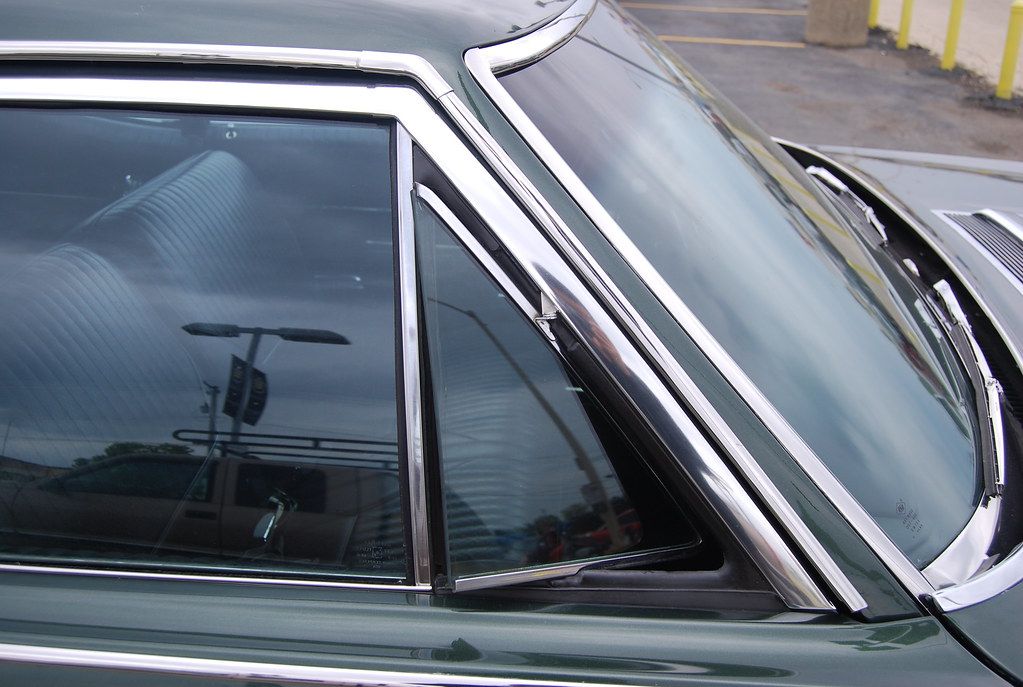
5. **Vent Windows**Before the widespread adoption of air conditioning, staying cool on a hot day in the car was a genuine challenge. Enter the ingenious vent window, sometimes also known as “quarter glass” or “wing windows.” These small, triangular-shaped windows were a godsend, positioned either at the front or back of the main front window on the side of the car. They were mounted on a hinge, allowing them to pivot open and direct a focused stream of fresh air right into the cabin.
This feature was the “original air conditioning” for many vehicles. You could angle them precisely “to shoot some cool, fresh air into the cab without much road noise or the annoyance of wind messing up your hairdo.” Even with the main windows closed, just a bit of that cool, fresh air blowing across your face made driving so much more bearable and, frankly, “lots of fun.” They were also quite handy for flicking out those cigarette butts (from the aforementioned ashtray and lighter era, of course!), or as a convenient, albeit risky, way to try and get into the car if you’d locked your keys inside.
As air conditioning became a standard and expected feature in cars, and manufacturers increasingly focused on aerodynamics and fuel efficiency, the vent windows gradually disappeared. Their design, while functional, wasn’t exactly aerodynamic, and their need diminished with improved climate control systems. While we’ve gained incredible comfort with modern AC, there’s a nostalgic charm to those simple, swiveling windows that offered a perfectly directed breeze, a feature that today’s youth would surely find utterly perplexing.
Read more about: Boomers, Get Ready to Rev! These 12 Iconic ’60s Car Models Still Drive Our Dreams

6. **Full Size Spare Tires**Picture this: you get a flat tire, and you open your trunk to find… another full-sized tire! Not a dinky “donut” that looks like it belongs on a toy car, nor a can of sealant and a miniature air compressor. No, we’re talking about a proper, robust, full-size spare tire. Back in the day, “we would be lugging around a big old tire in the trunk.” It was a standard, comforting feature that ensured you could get back on the road with minimal fuss after an unfortunate puncture.
However, times have changed dramatically. “Some manufacturers do not give any kind of spare tire anymore.” Modern vehicles often come equipped with “run-flat tires that can be driven up to 50 miles at zero air pressure,” or they provide a tire inflation kit with a can of sealant and a small air compressor. Why the shift? Several factors contributed to the demise of the full-size spare. Carmakers are constantly seeking ways to improve fuel economy, and a spare tire adds significant weight, which is the “enemy of efficiency.” Additionally, advances in tire construction and materials have “dramatically improved tire durability, making flat tires less common than in the past.”
Eliminating the spare tire and jack assembly also frees up valuable space in the trunk, which can be used for more cargo or to create a more compact vehicle design. While these modern solutions offer convenience, there’s something reassuring about having a proper, identical fifth wheel ready to go. As Bill Kirkpatrick, an ASE and Volkswagen Master Technician, recalls, “In less than 20 years, cars went from full-size spare tires to space-saver ‘donuts’ to no spares at all.” It’s definitely a feature that highlights how much automotive priorities have evolved.
Read more about: The Vanishing Act: 12 Car Features Automakers Are Quietly Removing and What Every Buyer Needs to Know Before Signing

7. **Cassette Players and CD Changers (and 8-Track Players)**Before the age of streaming, Bluetooth, and USB ports, how did we listen to our tunes on the road? Well, prepare for a blast from the past: cassette players and, later, CD changers. And if we go back even further, there were gigantic eight-track tapes! While eight-tracks were cumbersome, “cassette tapes were a welcome change” due to their smaller size and, crucially, the ability to create custom playlists. Yes, compiling mixtapes for your car was an art form, a rite of passage for “most 1980s teens” who can vividly remember “sitting at the boombox with a cassette tape copying music from the radio.”
With the advent of CD players in cars, the market needed a way for drivers to switch through multiple albums safely. This led to the innovation of CD changer magazines, often located in the trunk, which allowed you to load your favorite albums and control them from the radio on the dash. “These not-so-long-ago technologies offered superior sound quality, particularly over AM and FM radio,” providing a rich audio experience for long road trips and daily commutes. The tactile sensation of pushing a favorite mixtape into the dashboard or carefully selecting six CDs for a cartridge in the trunk holds a special place in our hearts.
However, the “ubiquity of satellite radio and streaming audio” has effectively “relegated physical media to dusty shelves in the basement.” The sheer convenience of having “thousands of songs, engrossing podcasts, or unputdownable audiobooks” at our fingertips through digital media made physical formats obsolete almost overnight. “Very few new cars even have a CD slot these days—many will have multiple USB ports instead.” Millennials, especially, “will never use cassettes, like many other once-common items that have been rendered relics.” While digital media offers incredible choice and convenience, there’s a definite nostalgic element to the physical media of the past, a hands-on connection to our music that’s now a cherished memory.” , “_words_section1”: “1940
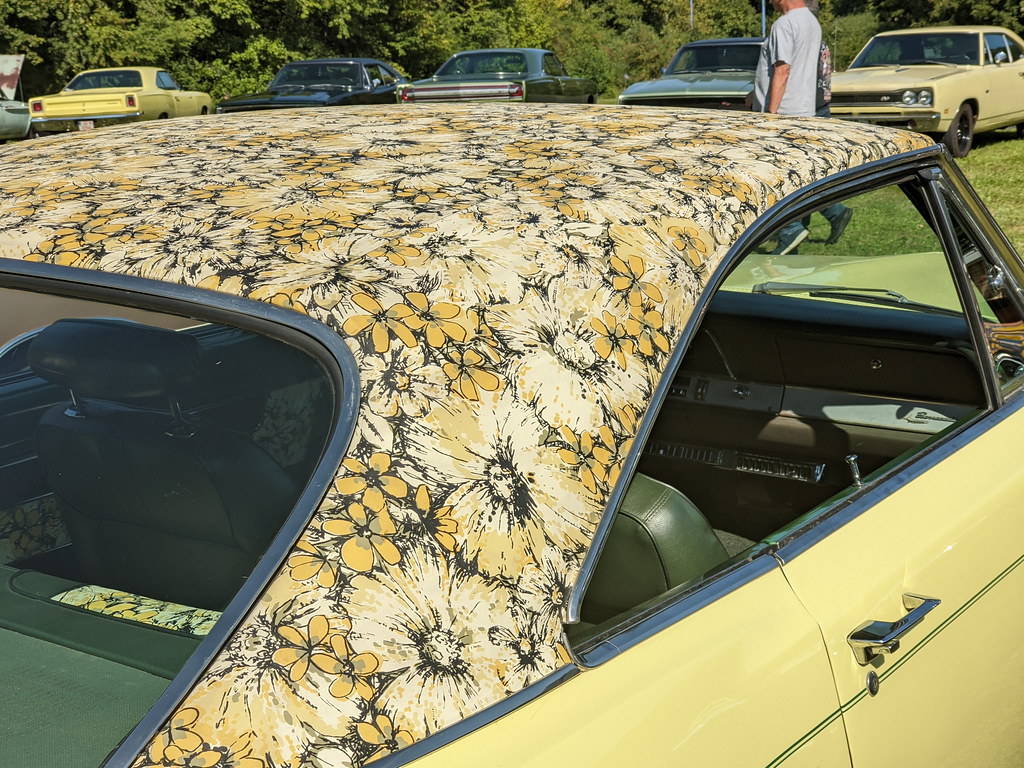
8. **Vinyl Roof**Ah, the classic vinyl roof! If you weren’t around in the 1960s and 70s, you might look at pictures of cars with these beauties and wonder if someone just glued a tablecloth to the top. But trust us, these weren’t just for show – well, they were *mostly* for show! Vinyl roofs were a popular design trend, created to give fixed-roof cars the upscale, luxurious look and feel of a convertible, but without the cost and complexity of a retractable top. It was a clever way to add a touch of class and distinction.
These weren’t your run-of-the-mill vinyl wraps you might see today, either. Manufacturers got creative! Some, like Chrysler, even produced incredibly bold and memorable “Mod Tops” which featured eye-catching floral and paisley patterns. Imagine pulling up in a car with a roof that screamed personality and style, perfectly complementing the groovy vibes of the era. It was a statement piece, making your car stand out from the crowd and embodying a unique aesthetic that defined a generation.
However, as car design began to evolve towards sleeker, more aerodynamic, and minimalist aesthetics, the chunky, often textured vinyl roofs started to fall out of favor. The emphasis shifted from emulating convertibles to crafting cohesive, modern forms. The manufacturing complexities and the simple march of changing tastes eventually led to their decline as a factory option.
While they drove off into the sunset as a standard feature, the allure of the vinyl roof hasn’t completely vanished. If you’re really hankering for that classic look on your modern ride, it’s still possible to add a vinyl roof as an aftermarket customization. So, if a kid today sees a vintage ride with a floral vinyl top, they might just think it’s the coolest, most unexpected thing ever.
Read more about: Fueling Your Midnight Cravings: A Buzz-Worthy Tour of America’s 10 Most Iconic 24-Hour Diners – Perfect for Your Next Late-Night Uber Eats Order!
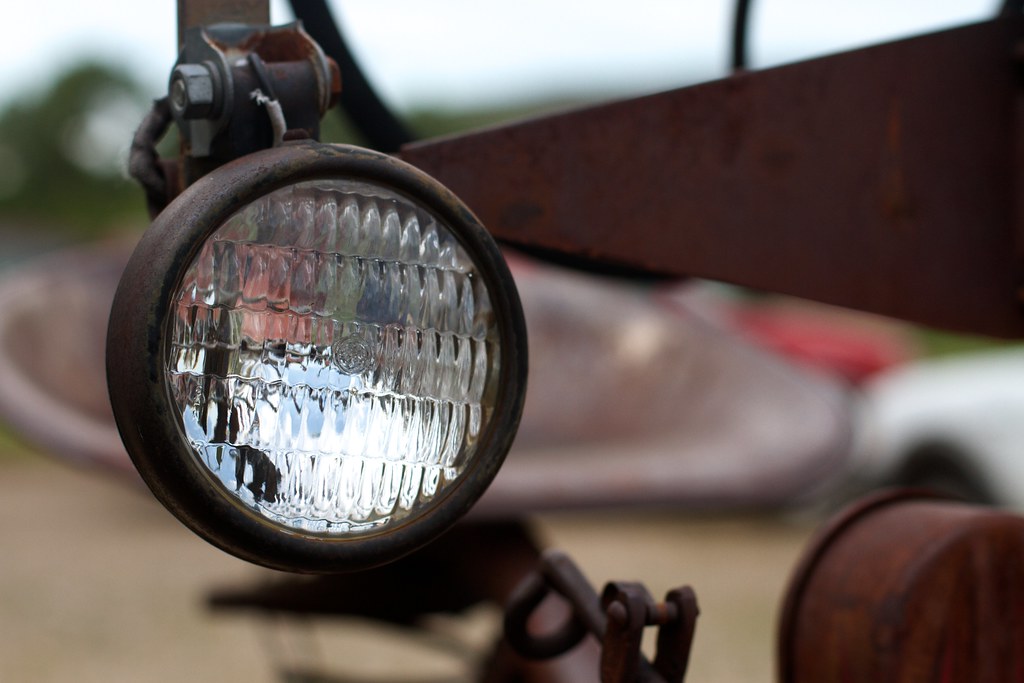
9. **Foot Switch High Beam**Alright, picture this: you’re driving along a dark country road, and you need to flick on your high beams. What do you do? Most of us instinctively reach for a stalk on the steering column, right? Well, for drivers of older cars, especially from the ’50s, ’60s, and ’70s, it was a completely different dance! They would use a dedicated foot-operated switch located conveniently (or inconveniently, depending on who you ask!) near the driver’s left foot on the floorboard.
This “foot dimmer switch” was a quirky but functional piece of automotive engineering. You’d simply tap it with your left foot to toggle between high and low beams. It was designed to keep the driver’s hands firmly on the wheel, a logical thought process for its time. Some older drivers even preferred this setup, pointing out that the left foot often doesn’t have much to do while driving, freeing up the hands for other controls – or, let’s be honest, just keeping them less busy.
Of course, like many old-school features, it wasn’t without its quirks. Imagine operating a floor-mounted switch in a car where your boots track in mud, snow, or general grime. Critics argued that the switch could easily get dirty, affecting its reliability or simply making it less pleasant to use. The constant exposure to the elements and foot traffic meant it wasn’t the cleanest or most protected mechanism in the car.
Eventually, the practicality of a hand switch located on the steering column won out. This allowed for easier and cleaner operation, integrating the high beam control with other essential functions like turn signals and windshield wipers. While the foot switch high beam has long faded from most production cars, it’s a fantastic reminder of how much even the simplest car functions have evolved, leaving modern drivers completely bewildered by its existence.
Read more about: Beyond the Cake: 7 Unfiltered Wedding Family Feud Moments That Show Where Real Disagreements Brew
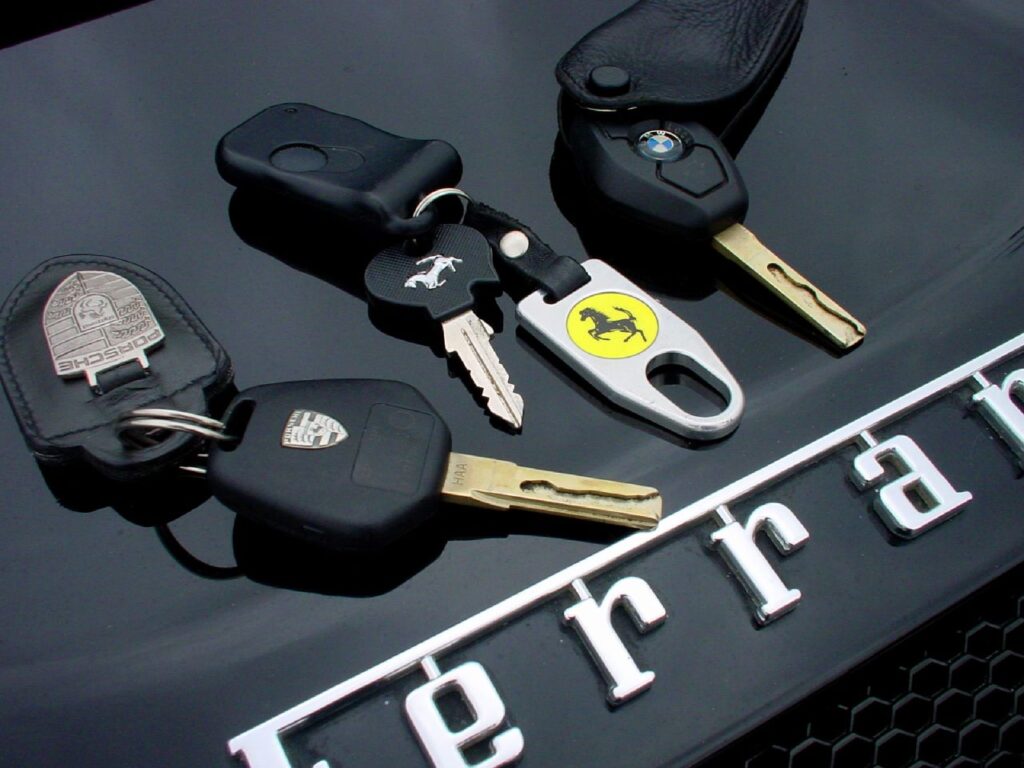
10. **Actual Keys**In an era where our phones are our keys, our audio players, and our navigation systems, the concept of a “key” for a car might seem utterly foreign to a younger generation. But believe it or not, there was a time, not so long ago, when starting and entering your car required a literal, physical metal key! You’d insert it into the door lock to open up, and then into the ignition to crank the engine to life. It was simple, reliable, and undeniably tactile.
For decades, this was the undisputed standard. Your car key was a universal tool: it locked and unlocked the doors, popped open the trunk, and got the engine roaring. There was no fumbling for a remote, no pushing a button on a fob – just a satisfying turn of the wrist. This direct, mechanical connection to your vehicle felt robust and secure, a straightforward system that rarely let you down.
Today, most new cars offer the magic of proximity keys, which use radio signals to digitally unlock and start your car without you ever having to take the key out of your pocket or bag. This “keyless” convenience is certainly appealing, making those rainy-day dashes or armfuls of groceries a little easier to manage. It’s a testament to how far automotive technology has advanced in a relatively short time.
However, the traditional key hasn’t entirely vanished. Entry-level cars and those destined for rental agencies often still feature a classic key, partly because they’re harder for “careless renters to lose” and are generally more robust. While modern proximity keys offer undeniable convenience, they also come with a unique drawback: the risk of “thieves walking through your neighborhood might be able to get into your car” by capturing the key’s radio signal. So, while we’ve gained futuristic convenience, we’ve sometimes sacrificed a bit of that old-school, tangible security.
Read more about: Spill the Tea (But Not That One): 14 Drinks Customers Adore That Bartenders Secretly Can’t Stand Making

11. **Velour Seats**Get ready for a serious throwback to the plush life of the 1970s and 1980s: velour seats! If you wanted to scream “upscale” and “luxury” back then, a car with velour upholstery was the way to do it. This soft, fabric-covered seating was everywhere, especially in American cars, and it gave interiors a distinctly opulent and comfortable feel. Imagine sinking into those velvety soft cushions – it felt like a living room on wheels!
Velour was all about comfort and an immediate sense of richness. It wasn’t just a basic fabric; it had a texture that felt expensive and inviting. For many car buyers of the era, it represented a step up from plainer cloth or vinyl, offering a touch of indulgence that made long road trips feel a little more luxurious. The visual appeal was unmistakable, often coming in deep, rich colors that further enhanced the sense of automotive grandeur.
However, for all its initial charm, velour had its downsides. This luxurious fabric, while soft, simply “could not handle wear and tear” as well as modern materials. It was prone to fading over time, especially with prolonged exposure to sunlight, and it was notoriously “hard to clean.” Spills or stains became an immediate headache, often requiring specialized cleaning that proved frustrating for car owners.
And let’s not forget the, shall we say, “sweat factor” from sitting in them on “long road trips in the summer.” That plushness, which felt so comforting in cooler weather, could become a real sauna experience when the temperatures soared. Modern car interiors have largely moved on to more durable, easier-to-clean fabrics, leather, or synthetic alternatives that offer better breathability and longevity. So while velour seats were a defining feature of an era, their practical drawbacks ultimately led to their departure from mainstream car design.
Read more about: Beyond the Mainstream: 14 Unforgettable ’70s Classic Cars That Shaped Automotive History for Enthusiasts

12. **Opera Windows**Coupes from the 1970s and 80s often sported a charming and distinctive feature that would truly baffle modern kids: the opera window! These weren’t your typical large, functional windows; instead, they were small, often round or oval-shaped openings located on the latter part of the roof, specifically in the C-pillar area behind the rear passenger window. They were less about panoramic views and more about making a stylish statement.
The original, somewhat practical, use of these tiny windows was “to help minimize blind spots,” offering a slight improvement in rear visibility for the driver. In an era before sophisticated blind-spot monitoring systems or wide-angle rearview cameras, any extra glimpse of the road could be considered a benefit. However, let’s be honest, their primary role quickly shifted from functionality to pure aesthetics, adding a touch of flair and perceived luxury to the vehicle’s profile.
Opera windows became a popular styling cue, particularly on personal luxury coupes, contributing to the distinctive visual identity of many cars of that period. They offered a unique architectural detail, breaking up the expanse of the C-pillar and giving the car a more elegant or sometimes even sporty appearance. They were a badge of design, setting certain models apart.
Thankfully, “visibility in cars is much better these days” thanks to advancements in vehicle design, larger glass areas, and, of course, those handy cameras and sensors. This rendered the minimal visibility benefit of opera windows obsolete. As automotive design became more streamlined and focused on performance and modern aesthetics, the opera window faded away, leaving behind a quirky and undeniably retro design element that perfectly encapsulates a specific time in automotive history.
Read more about: Recall the ’60s? These 12 Iconic Authors Defined an Era and Their Books are Still Essential Reads
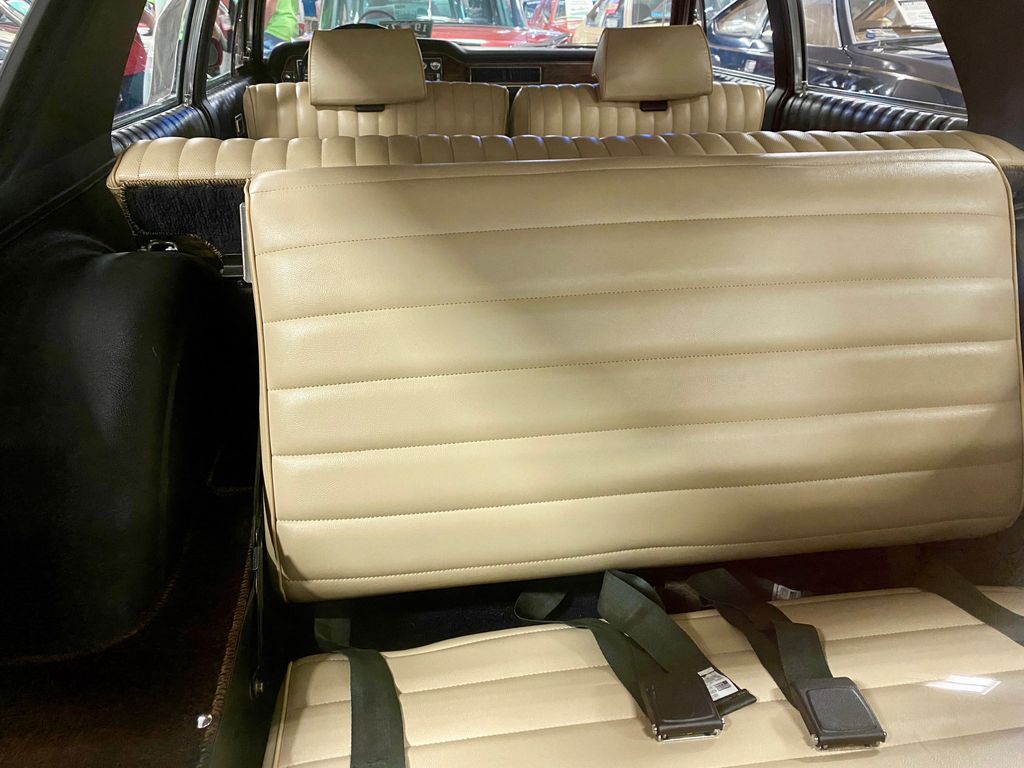
13. **Bench Seats**Before the era of bucket seats, center consoles packed with cupholders, and infotainment screens, the front of most family cars featured one long, continuous seat: the iconic bench seat! This was the standard for decades, offering a different kind of automotive experience. Imagine being able to “fit 6 people in your car” – three in the front, three in the back – making it the ultimate ride for big families or carpooling adventures.
Bench seats offered a surprising amount of versatility. They were often paired with column-mounted shifters, which freed up the floor space even more. For manufacturers, they were a “cheaper production cost” option, making them popular choices for a wide range of vehicles. And let’s not forget the undeniable charm for “date night, where a loved one can slide closer to the driver.” There was a cozy, intimate feel that modern, segmented front seats just can’t replicate.
However, the march of progress and safety regulations eventually spelled the end for the widespread front bench seat. That middle seat, while great for fitting an extra person, “was never the most comfortable,” often being narrow and leading to “elbows, shoulders, and knees to rub.” More critically, “safety is the primary reason bench seats have been relegated.” With the advent of airbags, it became “nearly impossible to fit an airbag for that center seat right where the radio would go,” as airbags are most effective when directly in front of a passenger.
Despite their practicality and nostalgic appeal, safety concerns and changing consumer preferences for individual comfort and features like robust center consoles led to their decline. The last reported American car with a front bench seat was the Chevrolet Impala, which stopped production of this option in 2014. So, while we’ve gained in safety and individual passenger amenities, we’ve certainly lost that unique six-passenger flexibility and the cozy intimacy of a classic front bench.
Read more about: Are You That Commuter? Unmasking the 14 Transit Faux Pas That Drive Fellow Riders and Operators Wild – A Guide to Smoother Journeys
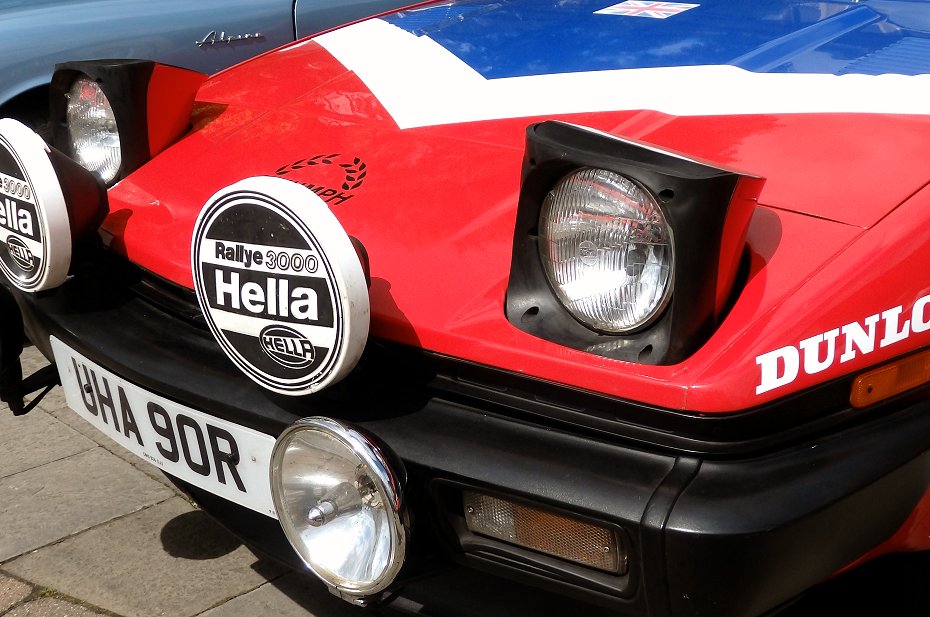
14. **Pop-up Headlights**Oh, pop-up headlights! If you were a kid (or adult!) in the 1980s and 90s, these were the epitome of cool. From sleek sports cars like the Mazda Miata and Nissan 240sx to even some family sedans and the iconic Ferrari F40, the way these lights would magically emerge from the car’s body was pure automotive theater. Car enthusiasts “still miss” this feature, and it’s easy to see why – they gave cars a distinctive, almost futuristic look that’s simply captivating.
The rise of pop-up headlamps was a fascinating blend of style, aerodynamics, and government regulation. For many years, the U.S. government “mandated that cars have only certain sizes and shapes of headlamps.” As designers pushed for lower, more aerodynamic front ends to improve fuel efficiency and aesthetics, these fixed-size headlamps needed to go somewhere. The solution? Hide them away until needed! This allowed for “better aerodynamics and cooler looks” during daylight hours, transforming the car’s face with the flick of a switch.
Unfortunately, their cool factor couldn’t save them forever. “European regulations made producing cars with this feature more difficult and expensive,” and safety concerns also played a significant role. Those “protruding lamps can be very dangerous to pedestrians and bicyclists” in the event of an impact. Combine that with the relaxation of US government headlight design rules in the ’90s and advancements allowing for smaller, more powerful bulbs, and the days of the pop-up were numbered.
The last production car to offer pop-up headlights was the Chevy Corvette C5 in 2004, marking the end of an era. While modern LED and HID headlamps offer superior illumination and integrate seamlessly into sleek designs, there’s a definite nostalgia for the animated, transforming front ends that pop-ups provided. It was more than just a light; it was a personality statement that modern cars just don’t have.
Read more about: Drivers Are Seriously Done: The 12 Worst Car Trends of the Decade (and Beyond!) That Need to End Now

15. **Manual Door Mirrors**Here’s a feature that would utterly bewilder anyone who’s only known modern cars: manual door mirrors! Before the magic of electronics came into play, adjusting your side view mirrors wasn’t a quick flick of a joystick or button on the armrest. Oh no, it was a much more involved, often collaborative, effort. Drivers had to physically reach out and adjust the mirror glass by hand, or, in many cases, enlist the help of a passenger.
Imagine the scene: “Parents across the country would ask the kids to roll down the passenger window and move the mirror up, down, left, right, back up, and then back down.” This verbal ballet would go on for what felt like “minutes until the mirror was positioned just right.” It was a simple task, yet one that required patience and often a bit of negotiation, especially if you were trying to get it perfect in a hurry.
This hands-on approach to mirror adjustment was a stark contrast to today’s electric mirrors, which offer precise control from the driver’s seat. Modern cars also often feature heated mirrors, power-folding mirrors, and even auto-dimming functions – features that would have seemed like pure science fiction to drivers of yesteryear. The sheer convenience of pushing a button to fine-tune your field of vision is something we often take for granted now.
While the manual mirror was certainly a “chore,” especially in bad weather or when driving alone, there’s a certain charm in its simplicity and the occasional funny memory of trying to get it just right. It highlights how much our expectations for convenience and comfort in cars have skyrocketed. We miss those days of simple, mechanical interaction, even if we secretly love our power mirrors now!
Read more about: From Dominance to Decline: Why These 12 Iconic Car Brands Are Fading Fast in Today’s Volatile Market
And there you have it, a grand tour through the forgotten, quirky, and sometimes downright dangerous features of cars past. From the luxurious feel of velour seats to the mechanical ballet of pop-up headlights, these automotive relics tell a story of innovation, changing tastes, and the relentless march of progress. While we certainly appreciate the safety, efficiency, and tech-savvy comforts of today’s vehicles, there’s an undeniable allure to these old-school charms. They remind us that cars aren’t just about getting from Point A to Point B; they’re about the journey, the experience, and the memories we make along the way. So, next time you hop into your modern ride, spare a thought for the manual chokes, foot-dimmer switches, and bench seats that paved the way for the sleek machines we drive today. It makes you wonder, what seemingly normal features will kids 50 years from now be scratching their heads about?



